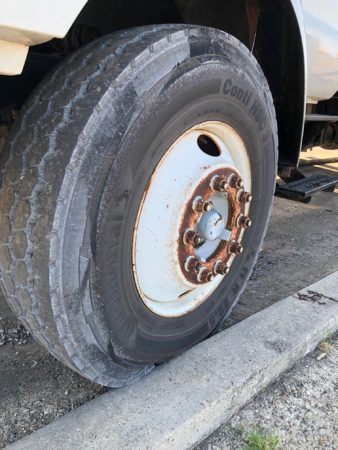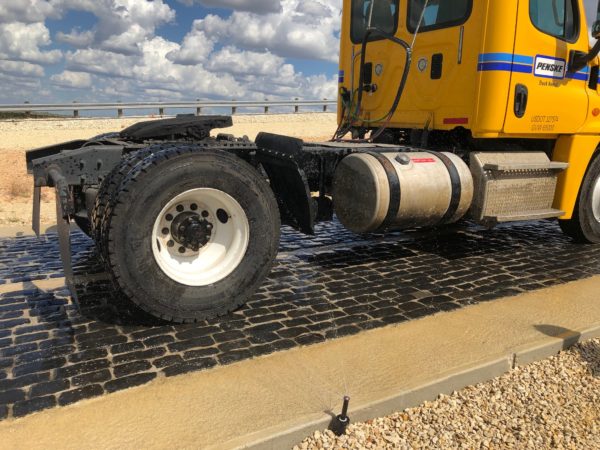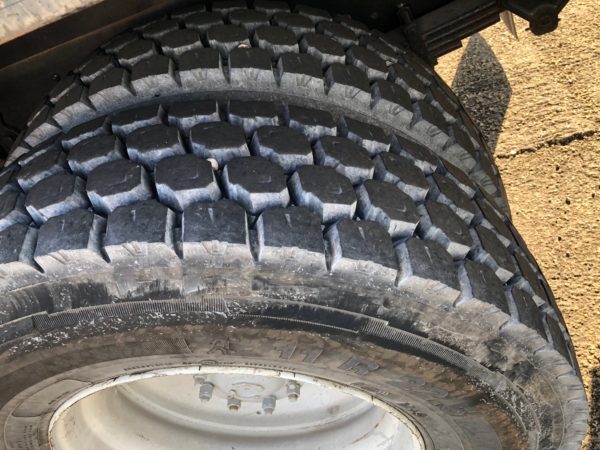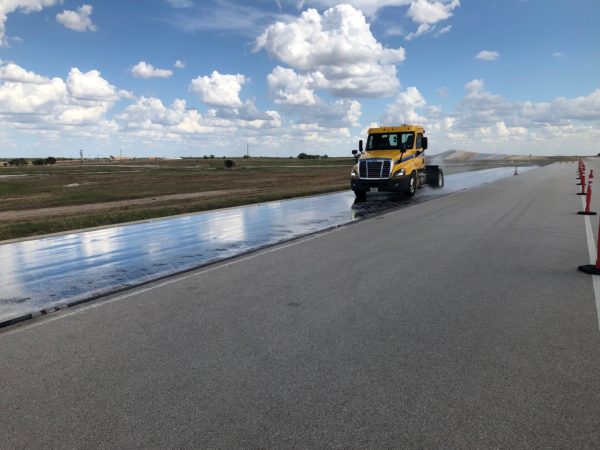Continental debuts ‘intelligent’ construction tires
UVALDE, Texas – Continental has come to market with a new line of “intelligent” construction tires, which come equipped with a sensor that reads temperatures and inflation pressures.
The sensor was designed by Continental to last six years or 400,000 miles. They’re mounted to the inner liner on all third-generation Conti construction tires, and are part of Continental’s suite of digital solutions.

“These tires in the construction segment see a lot of hazards,” explained Continental’s director of R&D Marco Rabe, who updated truck and tire journalists on the new rollout at the company’s massive Uvalde, Texas, proving grounds. “Fleets often come back to the same location overnight.”
Fleets have several options for monitoring the new line of intelligent tires. They can install the ContiConnect Yard Reader at their terminal, which will read tire temperatures and inflation pressures when the trucks return to the yard. ContiPressureCheck is an in-cab monitor that displays the same data.
In addition to being the construction industry’s first intelligent tires, the new design also improves on performance and wear. A new tread compound has been developed to provide a more even footprint, and the tire has been widened to 250 mm. The extra width improves how the tires feel when new, according to the company. They also wear slower than the first-generation construction tires they replace.
Continental is touting a 20% improvement in removal miles versus the predecessor. A deep tread gives added sidewall protection to help prevent damage from curbing. This was demonstrated at the proving grounds, where a truck equipped with the new tires was intentionally driven against curbing. Testing showed a 50% reduction in cuts than the HSC 1.
Torqued tread blocks help create a self-cleaning tread, which repels stones. To showcase this, a truck fitted with the new tires was driven on a gravel track, comprised of rocks that were the ideal size to stick within the tread. But after a short drive on pavement, all but a couple of the stones had been ejected. This will reduce failures and also improve retreadability, Continental claims.

Matching retreads will also be offered as part of the Conti construction tire line.
The new tires were put through their paces at Continental’s sprawling 5,000-acre proving grounds with as many as 30 different tracks. Traction was showcased on a wet cobblestone hill featuring a 5% grade. Competitive tires were also tested on the same course to demonstrate the grip of the new series.
The stopping capabilities of the tire were also showcased on a slick surface. The Continental tires provided about a 20% reduction in stopping distance compared to a competitive design, and was noticeably more stable in a panic braking situation at 52 mph.
While Continental is best known for its tires, they account for just 26% of its total sales. It’s the third largest automotive supplier in the world, ahead of household names such as Magna and ZF. It’s also the fourth largest tire maker in the world.
Seventy-five per cent of all vehicles on the road have at least one Continental product in them, according to marketing director Carol Wagner.
The company is also growing. Rabe said it produces about eight million truck tires a year, about a third of them in the U.S. at its Mount Vernon, Ill., plant. Up to five million pounds of rubber are mixed at the plant each day. The company recently opened a pre-cured tread plant next door.
“Now our retread designers sit right next to the new tire designers,” Rabe said.
A new $1.4-billion plant is being built in Clinton, Miss., which will produce about 750,000 truck tires annually beginning in 2020.

Wagner said the company’s goal is to transition from tire supplier, to complete solutions provider. It targeted the construction segment for its first intelligent tires because of the punishment those tires take, the fact they often return to base regularly, and because it represents a large market.
In the U.S., there are more than a million construction truck tires in the aftermarket, in addition to 400,000 on the OEM side. In Canada, the number is 300,000 in the aftermarket and 20,000 between OEMs.
“It’s a very important market and it makes a lot of sense for us to put the effort into bringing the best solution out there,” Wagner said of the construction market. In addition to construction, the new line is aimed at forestry/lumber, heavy-haul, special loads, waste and sanitation applications.
The new line consists of the Conti HSC 3 steer tire, the Conti HAC 3 all-position tire, and the Conti HDC 3 drive tire, each with matching retreads. The new 3G casings come with a six-year, three-retread warranty. The sensors are available for retrofit in existing tires.

Have your say
This is a moderated forum. Comments will no longer be published unless they are accompanied by a first and last name and a verifiable email address. (Today's Trucking will not publish or share the email address.) Profane language and content deemed to be libelous, racist, or threatening in nature will not be published under any circumstances.